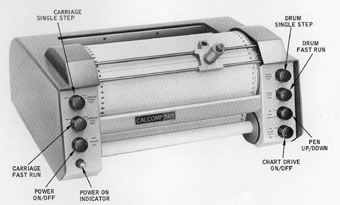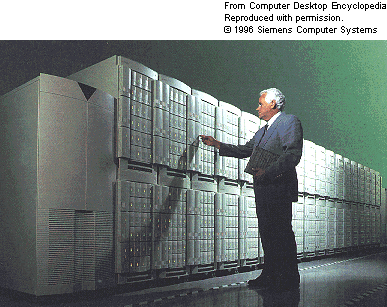
My Favorite Computers
Back in High School, I learned how to program on an IBM minicomputer called the 1130.
I took a FORTRAN programming class at a local Community College, and also learned how to program graphics through a Calcomp 565 ink and paper drum plotter.
The programming class was taught by a local mining engineer, who liked me and offered me a summer student internship as a programer working for Falconbridge Nickel Mines up in Canada.




At that time, Falconbridge Nickel Mines had a Honeywell H200 mainframe computer, and I interned doing scientific programming for the Operations Research Department.

While still in high school, I also took a COBOL programming class at nearby Laurentian University, and learned all about the IBM 360/40 Mainframe computer.


This Digital Equipment Corporation PDP10 Computer was the main timesharing system at the University of Western Ontario.
I programmed it in FORTRAN, Assembler, BASIC and COBOL.
This Control Data Corporation CYBER 73 mainframe was the University's large High Performance Computer system. The system was designed by Seymour Cray - it was state-of-the-art.
I programmed it extensively in FORTRAN and ran computationally intensive jobs on it.


While still interning summers at Falconbridge Nickel Mines, I used a DIGITAL pdp 8 minicomputer to extract and monitor metal concentrations from the various steps in the smelting process - all in real-time through controling some attached X Ray Florescence instruments.
Still back in college, I had the opportunity to program a pdp 15 computer. I gained some very early exposure to newly-emerging real-time computer graphics technology, as seen here displayed on early vector graphics CRT consoles.
BTW, a personal friend of mine, Jack Burness, wrote the world's first graphics computer game called SPACE WAR on a pdp15.
It was the inspiration for PONG.


For a short period just after college, I worked at a Computer Service Bureau (today called a Cloud Services Provider).
I was a System Engineer - I supported customers who were developing scientific codes on a large UNIVAC 1108 timesharing mainframe computer.
Next, I worked for a Minicomputer company, General Automation Inc.
I developed COBOL and Assembler code as part of an on-line ATM network for the Bank of Montreal in Canada. GA transfered me from Canada to California. to work on the project, and I stayed.


For a short period, I was involved with a software startup company in San Francisco, and we developed some DBMS software on a Motorola MC68000 UNIX platform - just like this one from Fortune Systems.
I also developed some DBMS software for the brand new COMPAQ portable computer system.


Next, I was living in Texas and I was a software instructor for MASSCOMP Inc, (now Concurrent Computer).
I taught classes at NASA Johnson Space Center in Houston, and across the USA. This was the real-time UNIX system that MASSCOMP manufactured. It was based on the powerful (for that time) Motorolla MC68030 microprocessor.
I later got into sales with MACCOMP, and sold many of these systems to the US Military.
Next, I sold the state-of-the-art Kendall Square Research massively parallel KSR supercomputer to universities in the Texas area.


Next, I proudly worked for Digital Equipment Corporation selling the ALPHA MICROPROCESSOR line of servers - the fastest processors in the world back in the day.
Then, I briefly sold a massively parallel computer system made by Pyramid Technology. This was a special purpose machine which was the fastest Oracle platform in the world at the time.


Digital merged with Compaq, and then I found myself selling the Compaq/Tandem Non-Stop mainframe computer. This special architecture was fault tollerant, and had incredible system availability. This is the type of system used to keep the NYSE stock market trading secure.
Next, I was part of a high-tech startup - SiCortex.
The SiCortex system was a massively parallel architecture that was built on ultra-low wattage processors. I5,832 CPUs in this one machine. It was very energy efficient, and way ahead of its time. Unfortunately the company was undercapitalized and the business failed.


Back at HP, I sold the Hewlett Packard Superdome Enterprise class UNIX server to customers that had extraordinary critical availabiliy and reliability requirements.
Recently, I did some business development work with Cray Inc, and introduced the Cray High Performance Computer technology into Texas, Oklahoma, Arkansas and Lousiana Universities.
